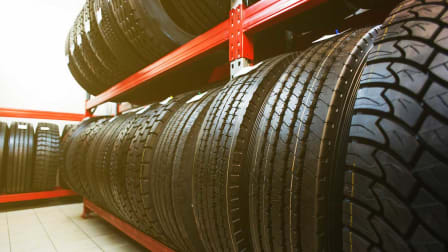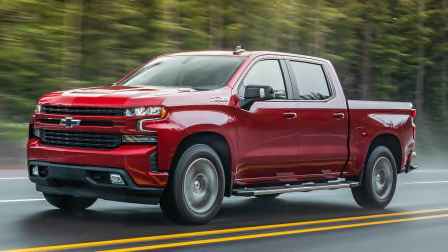The Truth About Tire Treadwear
Our exclusive tire tests give you a reliable read on how many miles you can really expect

Tire treadwear is about much more than how frequently the tires need to be replaced. How rapidly tires wear down speaks to how soon they will transition from providing optimal grip to losing their ability to divert water and avoid hydroplaning. Treadwear is a cost, convenience, and safety concern.
Our research tells us that when people shop for tires, their primary considerations are handling, wet grip, and treadwear. How well a tire holds the road in various weather conditions is a core element of the Consumer Reports test program. That information is available on the tire model pages, and the cumulative results are available in our annual Tire Brand Report Card. The treadwear warranty is also presented on the CR.org tire model pages, the tire brand’s website, and at the local tire store, but we have found that the warranty is only part of the story.
Do Tire Tread Warranties Wear Thin?
Many replacement tires, especially the all-season ones that come standard on a car, minivan, or SUV, have a prorated mileage warranty. It’s based on how long the tread on a tire is expected to last. For the tires in our ratings, it is usually between 50,000 and 90,000 miles. But those warranties often don’t offer the consumer much payback if the tires wear out prematurely. If tires wear out before the warranty mileage is used up, you’ll probably get only a fractional credit representing the miles the tires didn’t cover. And that’s good only toward the purchase of identical or comparable tires from the same manufacturer—which you may not want. You can’t use it to get better tires or tires from another brand.
Here’s where the math really doesn’t add up: The credit can be applied to a manufacturer’s suggested retail price for a new tire or to a dealer’s price. And that price is often high relative to the frequent discounts offered by many retailers. In fact, you may be able to buy new, discounted tires for less than the price of warranty replacements.
In addition, there are restrictions on getting your prorated credit. Your tires may have to show even wear across the tread, or the deal’s off. You may also have to show receipts verifying you had the tires rotated at the prescribed intervals, usually every 5,000 to 7,500 miles, since they were new.
The tires also have to be worn out, which is defined as having a tread depth of only about 2⁄32 of an inch. Tires that are worn out will perform poorly on wet roads and could pose a safety risk.
Our controlled tread life tests cut through the marketing mumbo-jumbo to tell you how many miles your tires will last before becoming worn out. Of course, your actual experience will vary according to the vehicle you drive, how and where you drive, routine maintenance, and other factors.
How to Read a Tire Sidewall

Tires have a wealth of information encoded on their sidewalls. When replacing them, we recommend staying with the size and speed rating of your car’s original tires. Check your owner’s manual for more information.
Size: On the tire above, 235 is the cross-section width in millimeters; 65 is the ratio of sidewall height to its width (65 percent); R indicates radial-ply construction; and 17 is the wheel rim’s diameter in inches.
Load index: Shorthand for the weight each tire can carry safely. The 94 here means 1,477 pounds per tire—pretty typical for a midsized car tire. That’s the maximum tire load.
Speed rating: A letter denoting the tire’s maximum speed when carrying the load defined by the load index—and not how fast you should drive! Standard all-seasons are usually rated T (118 mph) and H (130 mph). Climbing up the scale are V (149 mph), ZR (149-plus mph), W (168 mph), and Y (186 mph) ratings. Winter tires may carry the letter R (106 mph) or higher.
Treadwear grade: A government-required number that indicates a tire’s expected wear. A grade of 300 denotes a tire that will wear three times as well as a tire graded 100. But the numbers are assigned by tire manufacturers, not an independent third party.
Traction and temperature scores: Those scores denote a tire’s wet-stopping ability and temperature resistance. For traction, AA is best, C is worst. For temperature resistance, scores range from A (best) to C.
Manufacture date code: Every tire has a Department of Transportation number after the letters on the sidewall. The last four digits show the week and year the tire was made; for example, the digits 0324 would signify that the tire was made during the 4th week of 2024. Don’t buy tires more than a couple of years old.
































